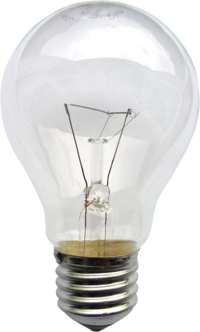
Photo from wikipedia
Abstract The influence of surface parameters on hydrogen isotope atom absorption into tungsten material was studied. For this purpose a series of experiments was performed, exposing tungsten pre-damaged by tungsten… Click to show full abstract
Abstract The influence of surface parameters on hydrogen isotope atom absorption into tungsten material was studied. For this purpose a series of experiments was performed, exposing tungsten pre-damaged by tungsten ions, the so-called self-damaged W, to low energy deuterium atoms with the flux density of 4.2 × 10 18 D / m 2 s for 121 h. Exposures were performed at four sample temperatures between 450 K and 600 K. Deuterium concentration was measured in situ and in real time during the exposure by nuclear reaction analysis. After the exposure, thermodesorption spectroscopy was performed on the samples. We have modeled the experimental data using a 1-D rate equation model and determined the detrapping energies and values of modeling parameters, which are describing deuterium atom adsorption on the surface of tungsten and migration of atoms from the surface to the bulk of the material. Assuming two adsorption site types, the determined surface adsorption energies are ( 0.68 ± 0.02 ) eV and ( 0.71 ± 0.02 ) eV and the activation energies for migration from the surface to the bulk are ( 1.41 ± 0.02 ) eV and ( 1.44 ± 0.02 ) eV , respectively. Modeling a low temperature plasma loading with the derived parameter set reveals that plasma loading experimental data could not be reproduced. We discuss possible reasons for the discrepancy between atom and plasma loading.
Journal Title: Journal of Nuclear Materials
Year Published: 2017
Link to full text (if available)
Share on Social Media: Sign Up to like & get
recommendations!